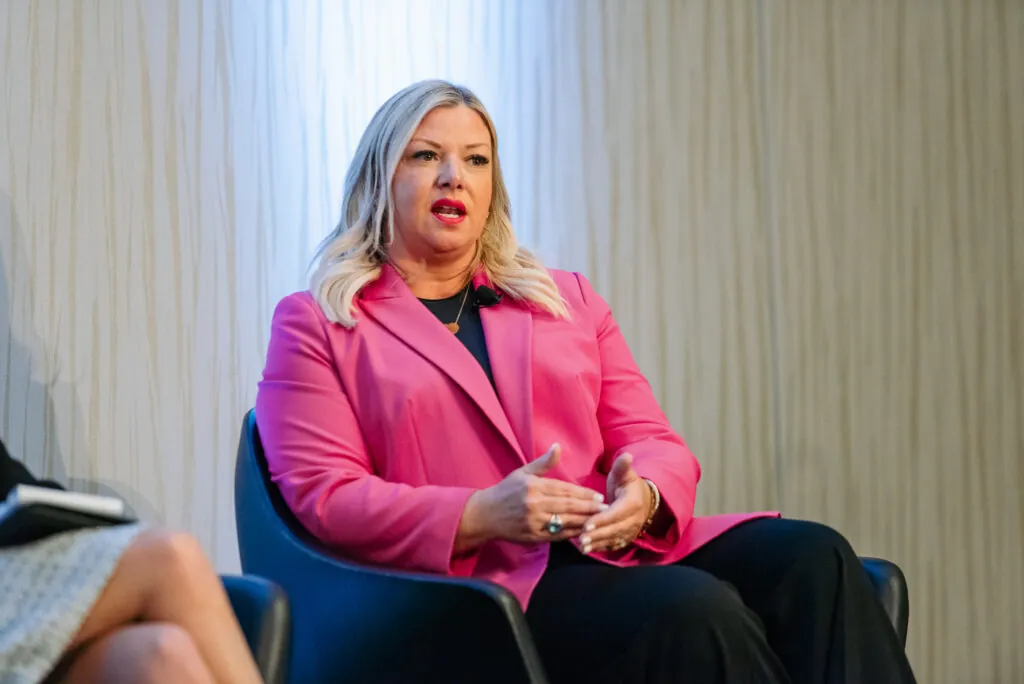There are many areas that top home care leaders believe are untapped wells of business opportunities for the industry at large. As such, leaders at companies like Home Helpers, HCR Home Care and Help at Home are leaning in.
For Home Helpers, this means creating longer-term relationships with health care networks.
“While the businesses are very different, from a billing, staffing and support model [standpoint], they are highly dependent on each other,” Home Helpers President and CEO Emma Dickison said during a panel discussion at Home Health Care News’ FUTURE conference last month. “In home care, we have the ability to really see that client on a more day-to-day basis.”
Cincinnati-based Home Helpers is a home care franchise that provides personal care, nutrition and companionship care, among other services. The company has 348 franchise locations, and serves about 1,500 communities across 39 states.
Dickison pointed out that the role of being the eyes and ears in the home has positioned home care providers to be able to recognize change in condition or care needs.
“We are an integral part of that entire health care experience, and we are there more often – in most cases – than other providers might be,” she said. “I think that’s a real opportunity for us to … be able to work more closely aligned on what we all want. That is providing exceptional care, taking great care of clients, enabling them to be in the place they want to be, which is home, and continuing to work towards reducing readmissions.”
Similarly, Help at Home President Tim O’Rourke believes that the industry should be doing more to connect home care and overall health care.
“Think about the length of the relationship we have with our clients,” he said during the panel discussion. “On average, we’re with them for four years, 22 to 23 hours per week in the home. Last year alone, Help at Home spent 80 million hours in people’s homes. We have an obligation to actually help people get connected to the health care system in a better way.”
Based in Chicago, Help at Home has more than 180 branch locations across 12 states. It provides personal care services to more than 66,000 clients via more than 53,000 caregivers.
One of the ways that Help at Home is connecting home care and health care is by surrounding its caregivers with the support of social workers, nurses and community health workers.
“To start connecting folks back into the health care system is a really huge opportunity for us,” O’Rourke said recently in a separate interview with HHCN. “One of our big highlights is what we’re actually seeing now — when we’re able to support our caregivers with this care team, we’re actually keeping our clients in the home nine months longer.”
Leveraging more in the home
On its end, HCR Home Care has been focused on collecting data, and turning it into leverageable information.
 Suzanne Turchetti
Suzanne Turchetti
“How do we show the value of home care, and not just to the families that are paying for it, but to the payers who are haggling us on rates,” Suzanne Turchetti, president of HCR Home Care, said during the discussion. “How do we show that it’s the lowest cost of care, it’s the most preferred locus of care, and use that data in a meaningful way to get to the table with payers and show them the value we provide? It’s very difficult to get data that means something to payers, and have that kind of conversation. I think that’s an opportunity that we could do much better at.”
Founded in 1978, HCR Home Care is a provider of home care and home health services across New York state.
One Home Helpers initiative that exemplifies the company’s desire to reach largely untapped areas of home care is its Cared-4 program. The goal behind the program is to lower preventable hospital admissions.
“[Cared-4} really aligned with what we were trying to do, which is to expand the care we provide in the home, and keep our clients in the home for as long as safely possible,” Dickison said. “It layers in some non-labor driven features that become part of a premium bundle that can be a la carte or bundled together.”
These features include things like medical monitoring in the home and wellness calls on the days that a Home Helpers caregiver isn’t in the home. The program also includes meal and nutritional services.
Dickison noted that the program has been a differentiator for the company, and has been popular with the company’s referral partners.
“As we talk about the future, I think that we’ll continue to see opportunities to provide additional services in the home,” she said. “There’s a whole lot of work that goes on around that. I think those are the types of innovations that you want to look for to differentiate yourself, but more importantly, to be able to continue to provide a broad spectrum of services that our clients are going to need as they age.”




